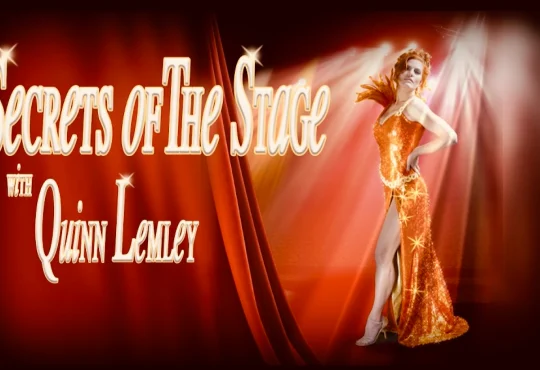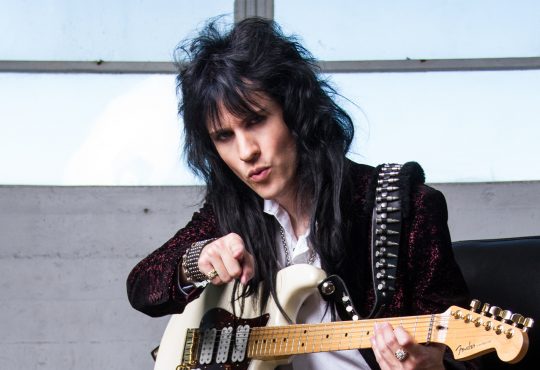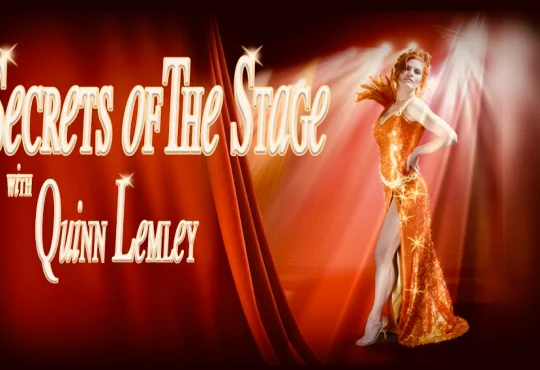Rolling Stones Creative Team Talk ‘Hackney Diamonds’ Tour Design
Since 1982, when the Rolling Stones launched a European leg of their Tattoo You tour, lighting designer Patrick Woodroffe has gotten both a front-row seat and a backstage look at how Mick Jagger, Keith Richards, Ronnie Wood, and the rest of the band work on the road.
“The real privilege is to see them in rehearsal,” he tells Rolling Stone on an early May Zoom from Arizona, a day before a Stones gig. “It’s thrilling still, even after all this time. They always get together for at least three or four weeks to rehearse for a leg of the tour. No costumes, no stage set, no smoke and mirrors, no audience of course. They arrive separately in their own cars … They say hi and pick up their instruments, and somehow, they just start to play.”
And they play and play and play, rehearsing decades-old concert staples like “Satisfaction” and “Gimme Shelter” as well as running through songs they can swap in and out of set lists on the fly. For the group’s Hackney Diamonds Tour, which kicked off in Houston in April, the band spent a month practicing 60 to 70 songs in Los Angeles.
“It’s crazy, isn’t it?” says Woodroffe, who is creative director and lighting designer at Woodroffe Bassett Design. “They’ve always had really high standards, particularly about rehearsing, even during some of the more chaotic periods of their career. I see them in rehearsal as a small group of players just wanting to make their music.”
Woodroffe’s perspective on the Stones, of course, is starkly different to how the rest of the world sees the group. For the Hackney Diamonds run, concertgoers will watch Jagger on the production’s nearly 46-foot-tall digital screens, as he and his bandmates traverse around a stage that’s approximately 180 feet wide by 65 feet deep. In total, there are close to 2,300 square feet of high-resolution LED screens.
The stage itself, designed by Stufish Entertainment Architects, weighs 485,072 pounds — about the same weight as 71 of those angular, Tron-like Tesla Cybertrucks, to pick one comparison. The tour requires 200 touring personnel, 14 of whom are on the video crew, including six camera operators who make the Stones look literally larger than life.
The production concept for Hackney Diamonds was to create a “virtual stage” that can adapt as the show goes on. Where the look of the band’s late-Eighties Steel Wheels tour was meant to evoke a dystopia and their mid-Nineties Voodoo Lounge tour reflected internet culture for the entirety of the concert, Hackney Diamonds changes from song to song, almost like sliding TikToks. Every song has its own custom-made look, from the visuals to the lighting.

stufish*
“We’ve freshened up everything,” Ray Winkler, CEO and design director at Stufish Entertainment Architects, says. “The stage is embellished by all of the digital media around them, and that, by default, makes it very contemporary. It’s very clean-edged. It’s not about the physical presence of a stage set but the continuing, evolving, and developing imagery that you see on the screens.”
“In one minute, it’s a very simple, geometrical building; nature takes over the next; and then it’s sort of a Jasper Johns American flag,” Woodroffe says. “We can change the way the stage looks in a virtual way.” Still, Woodroffe says he worked with the band to connect everything into a cohesive statement.
During its month of rehearsals, the band ran through about half of the 12 tracks on Hackney Diamonds; they’ve played four of them at concerts so far. By preparing for more, the crew could be ready for the band to surprise them at a moment’s notice and keep the production running seamlessly.
The songs on this tour are arranged into distinct acts: openers, Richards’ songs, the “home run” (as Woodroffe calls main-set closers), and then the encore. “The thing is quite well structured to the point that you can change out a song – if it has the same sort of feeling, the same sort of tempo – and not lose the flow or the way that the set works,” Woodroffe says.
“It’s a team effort,” Winkler says. “It’s a massive endeavor to get a project like this from an idea on paper into reality. There’s a lot of unsung heroes that contribute toward the success of it.”
Traditionally, Woodroffe worked closely on the look and feel of a tour starting about half a year before the first gig with Jagger and drummer Charlie Watts, who died in 2021, as well as Stufish founder Mark Fisher, who died in 2013. This time, after starting with Jagger and Winkler in the fall, Woodroffe ran the concept by Richards and Wood, who gave input. From there, they designed the stage sets, worked with costume designers, and commissioned videos from a studio called Treatment to play along with the songs. Eventually, they teamed up for rehearsals and got it all working together.
For Hackney Diamonds, the look of the tour began with the album launch last September in London, and they continued test-driving some of the looks at the band’s New York City pop-up concert in October. There was still no firm commitment for tour dates at that point, but Woodroffe and the creative team figured it was coming, so they started formulating what a stadium tour could look like. Around that time, they started working with Winkler and Stufish and the company that makes the films for them. From there, it was just a few months of production. The tour announcement came in November, giving them time to refine the look of it.
“I never want it to look too slick,” Woodroffe says. “This band is really authentic. Audiences will always be able to spot whether a performance is the real thing or not. It may be the soundtrack for the lives of the people in the audience, but it’s also the soundtrack of the Stones’ lives. They gift us their music, and that’s the real embrace. That’s the real thing.”
Winkler strikes a similar note. “At the end of the day, you want everything we do to come together,” he says. “You want that to be a catalyst to enhance the performance of the Stones in front of a very large crowd.”
Woodroffe programmed the lighting for the tour in Chicago and met up with the band in Houston for five days of rehearsals. “It was very exciting seeing it all up in Houston for the first time and feeling that we kind of got it right,” Woodroffe says. “When you get over that first hurdle that it’s actually going to work, then the fun part is finessing it and marrying it with the music and the visuals to make something special.” After overseeing the kickoff show, Woodroffe traveled with the band for their special appearance at Jazz Fest in New Orleans and made sure everything was working well again at the Glendale, Arizona, gig before flying home to England.
If and when the band is ready to design another tour after this one, Woodroffe says he’s ready, because he never knows when the call is going to come. “You will never know when the Stones are going to do their last performance,” he says. “None of us will. And not because there’s any mystique about it, it’s just the way they work. They finish a tour and go off on holiday and the tour promoters will offer them some new dates, they’ll go, ‘Yes,’ and off we’ll go.”







